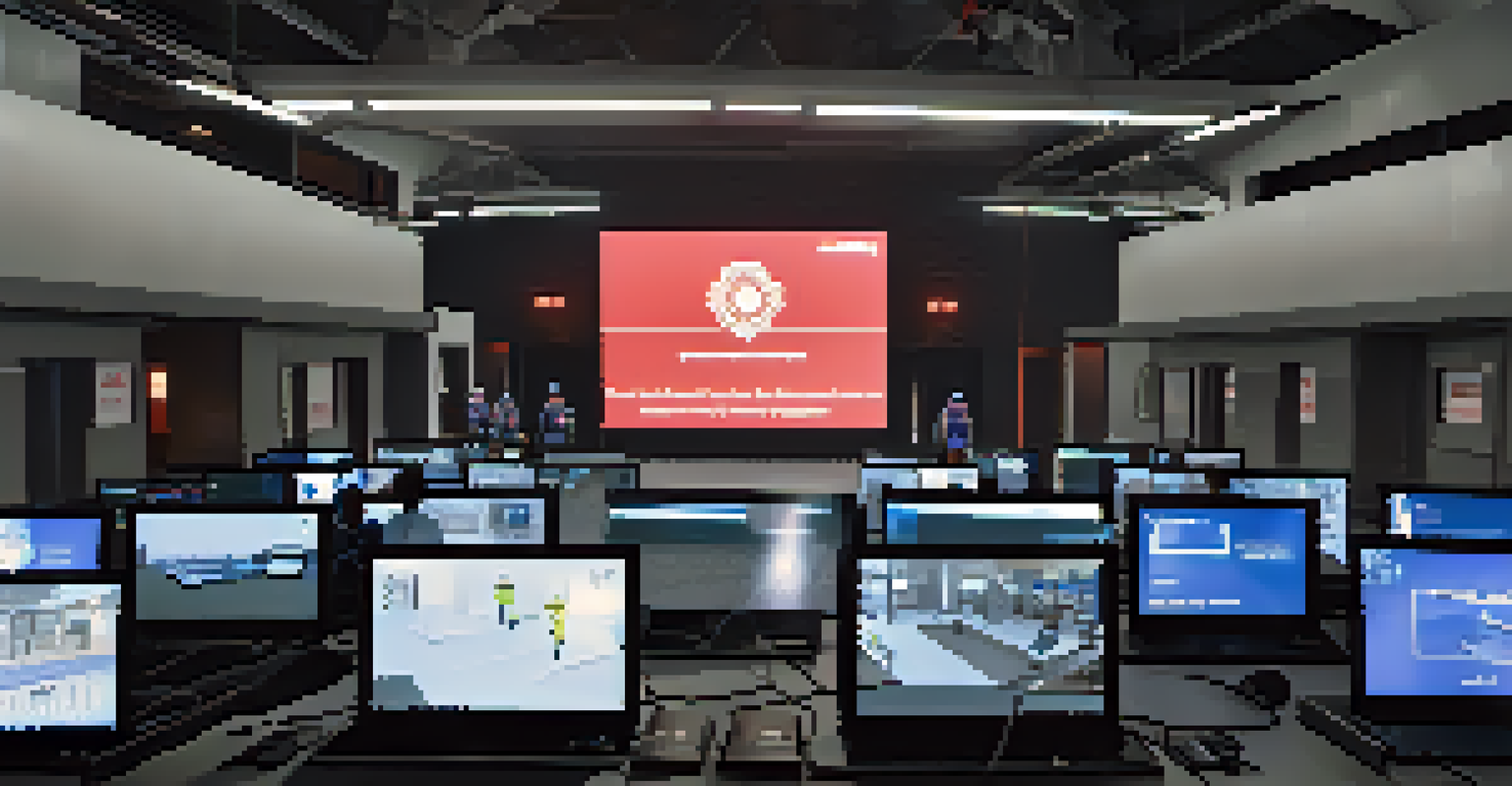How NYC Utilizes Technology in Disaster Management

Overview of NYC's Disaster Management Approach
New York City faces unique challenges when it comes to disaster management, given its dense population and diverse geography. To address these concerns, the city has developed a comprehensive approach that integrates technology at every stage, from preparedness to recovery. This multifaceted strategy not only involves city agencies but also engages the community, ensuring everyone is informed and ready to respond.
Data is the new oil. It's valuable, but if unrefined it cannot really be used.
At the heart of this approach is a commitment to using data-driven insights to guide decision-making. By analyzing historical data and trends, NYC can predict potential disaster scenarios and formulate effective response plans. This proactive stance is crucial for minimizing risks and enhancing the city's resilience against both natural and man-made disasters.
Ultimately, NYC's disaster management framework is built on collaboration and innovation. By leveraging technology, the city aims to create a safer environment for its residents and visitors, ensuring that everyone has access to the resources and information they need during a crisis.
The Role of Data Analytics in Disaster Preparedness
Data analytics plays a pivotal role in NYC's disaster preparedness efforts. By collecting and analyzing vast amounts of data, officials can identify high-risk areas and prioritize resources accordingly. For instance, during hurricane season, predictive models assess potential impacts on vulnerable neighborhoods, allowing the city to implement targeted evacuation and support plans.

Moreover, real-time data collection during disasters enhances situational awareness for emergency responders. Technologies like Geographic Information Systems (GIS) help visualize data on maps, providing clarity on the unfolding situation. This facilitates quicker decision-making and ensures that resources are allocated where they are most needed.
Data-Driven Disaster Preparedness
NYC utilizes data analytics to identify high-risk areas and prioritize resources, enhancing its disaster readiness.
As data analytics continues to evolve, NYC is committed to refining its strategies. The integration of machine learning and artificial intelligence can further improve predictive capabilities, making the city even more adept at anticipating and responding to disasters before they escalate.
Smart Technologies for Enhanced Response Capabilities
In recent years, NYC has embraced smart technologies to bolster its disaster response capabilities. For example, the deployment of drones allows for aerial assessments of disaster-affected areas, providing crucial information that ground teams may not readily access. This technology not only speeds up information gathering but also enhances safety for responders in hazardous environments.
In a disaster, it's not just about what you know, but how quickly you can share that knowledge.
Additionally, mobile applications are increasingly used to communicate important updates and alerts to residents. Through these apps, the city can disseminate real-time information about evacuation routes, shelter locations, and safety tips, ensuring that people have the knowledge they need to stay safe during emergencies.
These smart technologies exemplify NYC's forward-thinking approach to disaster management. By integrating innovative tools into their response framework, the city can improve overall efficiency and effectiveness, ultimately saving lives and resources.
Community Engagement Through Technological Platforms
Engaging the community is a vital aspect of disaster management, and technology plays a significant role in this endeavor. NYC utilizes social media platforms and dedicated websites to keep residents informed about potential risks and preparedness measures. This two-way communication fosters a sense of community involvement and encourages individuals to take proactive steps.
Moreover, NYC has established partnerships with local organizations and tech companies to develop applications that help citizens report hazards or seek assistance during a disaster. These platforms empower residents to play an active role in their safety, bridging the gap between government resources and community needs.
Smart Tech Enhances Response Efforts
The city employs smart technologies like drones and mobile apps to improve information gathering and communication during emergencies.
By prioritizing community engagement through technology, NYC not only enhances its disaster preparedness but also builds trust between residents and city officials. This collaborative spirit is essential for fostering resilience and ensuring that everyone is equipped to respond effectively in times of crisis.
The Importance of Training and Simulation Technologies
Training emergency responders is crucial for effective disaster management, and NYC leverages simulation technologies to enhance this process. Virtual reality (VR) and augmented reality (AR) tools provide realistic training scenarios that prepare responders for various disaster situations. This hands-on experience helps build confidence and skills, which are vital during actual emergencies.
Additionally, these simulation technologies allow for scenario planning, which enables agencies to test their responses to different types of disasters. By simulating events like earthquakes or floods, responders can refine their strategies and identify areas for improvement. This iterative training process ultimately leads to a more coordinated and effective response.
Investing in training and simulation technologies underscores NYC's dedication to continuous improvement in disaster management. As these tools evolve, they will play an even more significant role in shaping the city's preparedness and response capabilities.
Real-Time Communication Systems for Emergency Alerts
Effective communication is critical during a disaster, and NYC has developed robust systems to ensure real-time alerts reach residents. The city employs various channels, including text alerts, social media updates, and automated phone calls, to keep citizens informed about imminent threats. This multi-channel approach ensures that everyone receives timely information, regardless of their preferred communication method.
Moreover, NYC's emergency communication systems are designed to be accessible to all residents, including those with disabilities. By providing information in multiple languages and formats, the city ensures that everyone can understand and act on critical alerts, enhancing overall public safety.
Community Engagement is Essential
NYC fosters community involvement through technological platforms, empowering residents to actively participate in their safety during disasters.
These real-time communication systems exemplify NYC's commitment to transparency and responsiveness. By prioritizing clear and accessible communication, the city empowers its residents to make informed decisions during emergencies, ultimately saving lives.
Future Innovations in NYC's Disaster Management Strategy
As technology continues to advance, NYC is poised to incorporate even more innovative solutions into its disaster management strategy. Future innovations could include the use of artificial intelligence for predictive analytics, improving the accuracy of risk assessments and response planning. These advancements will allow the city to stay ahead of potential threats and enhance its overall resilience.
Moreover, partnerships with tech startups and research institutions can lead to the development of cutting-edge tools tailored to NYC's specific needs. From improved communication systems to advanced logistical support, these collaborations can drive significant improvements in disaster response capabilities.

By staying at the forefront of technological advancements, NYC is not only preparing for the challenges of today but also positioning itself to tackle future disasters. This forward-thinking mindset is essential for ensuring the safety and well-being of all New Yorkers.